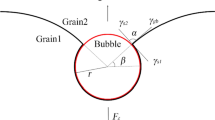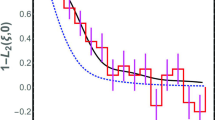Abstract
Metal disks of different size and density were placed at the bottom of a bed of monodisperse granular material. The system was vibrated sinusoidally in the vertical direction. It was observed that, if the angular acceleration of the shaking was slightly greater than that of gravity, the metal disks rose to the top of the bed. This result has been known for over sixty years, but a basic understanding of the mechanism responsible for the rise of the disks is still a subject of debate. Our experiments and theoretical model show that the ascent speed of the disk is proportional to the square root of the disk density, approximately proportional to the disk size, and is a function of the disk's depth in the bed. We also investigated the speed of ascent of the disk as a function of the shaking frequency, f s . We found that the effective friction or drag coefficient, β, between the disk and the granular bed, is proportional to a functional form of the frequency: β∝ (f s −f c )−4, where f c is the critical shaking frequency for the disk to start moving through the bed. We discuss how such a dependency may arise.
Similar content being viewed by others
Author information
Authors and Affiliations
Additional information
Received: 28 August 2000
Rights and permissions
About this article
Cite this article
Liffman, K., Muniandy, K., Rhodes, M. et al. A segregation mechanism in a vertically shaken bed. Gran Matt 3, 205–214 (2001). https://doi.org/10.1007/s100350100093
Issue Date:
DOI: https://doi.org/10.1007/s100350100093




